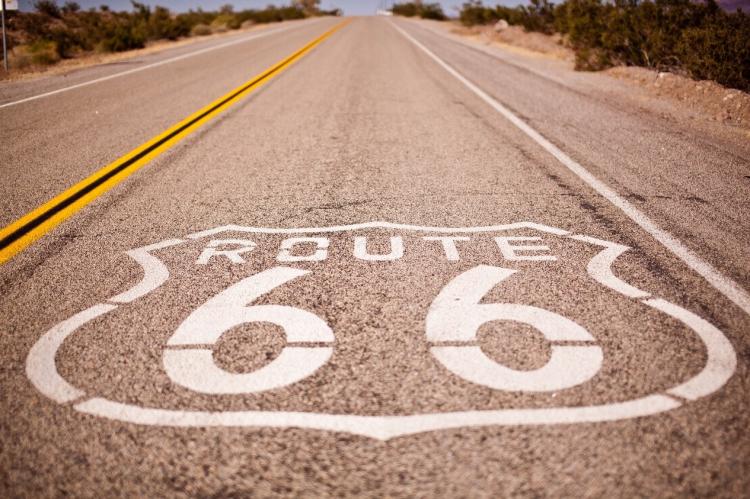incredible car number 7
At the 1948 Amsterdam Motor Show, three pre-production Land Rover models were revealed to the public for the first time. Seventy years later, one of those cars, number 7, is unexpectedly enjoying a return to its former glory. We found its two former owners and invited them to come to the birthplace of this model together to start an incredible “survivor” story.
“The Land Rover, the most widely used car in Britain, is suitable for agriculture and ordinary civilian industry.”
—Introduction used on the stand of the original Land Rover at the 1948 Amsterdam Motor Show
Land Rover’s Lode Lane factory is located in Solihull.
If you only have a quick glance when passing by, it is difficult for you to deeply understand the historical background of this factory-it has undergone several reorganizations, but it has always adhered to the path of continuous evolution and development.
Land Rover’s series of advanced new models were born here, including Land Rover’s new Range Rover Velar, Land Rover Range Rover and Range Rover Plug-in Hybrid (PHEV).
Across the surrounding walls, through layers of strict security measures, you will see an unremarkable building. It is the birthplace of the Land Rover legend.
Founded in 1939, the factory served as a “shadow factory” for the British government during World War II and was first used to assemble Bristol Hercules aircraft engines.
In 1945 the Rover Motor Company took over the factory and began manufacturing and producing cars.
Beginning in 1947, the pre-series model later named the “Land Rover” went through the development, manufacturing and testing process here. Building 1 of the factory is where the engineering department is located, where the first 48 pre-production models were built, the predecessor of the later Land Rover Series 1 models.
Since then until January 2016, Land Rover Series 1, Series 2 and 2A, Series 3 and 3A, and Land Rover Defender models were all born here one after another.
Some of the original buildings of that year are still preserved in the Lode Lane factory.
Building 1 is one of them. Its mottled and weathered brick exterior has witnessed the history of Land Rover.
The glass roof is even covered in WWII-era camouflage, fading from the sun and rain.
These historical imprints are particularly appropriate on today’s special “Homecoming Day”.
Because today, Building 1 will usher in a special guest who has been reunited for a long time—a pre-production model numbered “L07”.
Once billed as “Britain’s most versatile car”, it was unveiled at the Amsterdam Motor Show on 30 April 1948.
The L07 and two other models, numbered L03 and L05 (L stands for left-hand drive), were the first Land Rover models to appear in front of the world.
In June 1955, this remarkable L07 model was sold and registered in the UK with the number plate “SNX 910”.
However, since late 1968, its whereabouts have been unknown, there is no record to check, and it was once thought that it would never be found again.
But, the unthinkable happened, and someone finally found it. What’s even more amazing is that this person also has a deep connection with the Lode Lane factory.
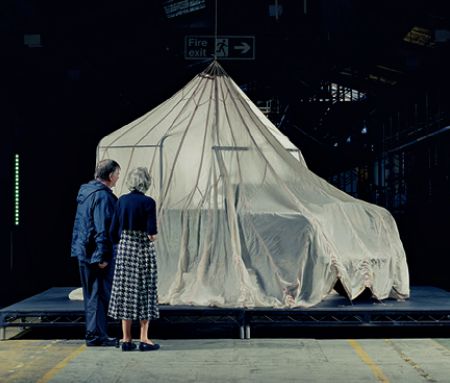
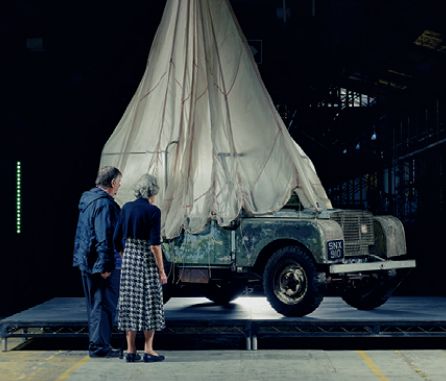
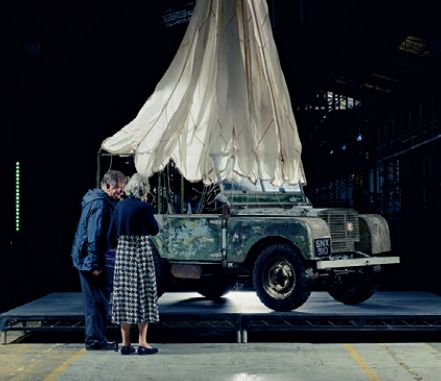

Lucky 7
Reg Mason has been working here since he was 14, on the production line of the Rover P5 model, next to the production line of the classic Land Rover at the time.
After that, he gradually became a lover of classic Land Rover models. Even after leaving the production line, he continued to work in other positions with the company for 25 years.
Now that he has retired, he never thought that he would have the opportunity to return to the original Building No. 1 again.
However, luck knocked on the door of his independent garage in 2016, and a series of events later brought him back to Building 1 today, where he was lucky enough to stand next to a prototype of an original Land Rover.
“It’s such an amazing story.” Mason said, pacing slowly around the “SNX 910”, noticing every wear and tear on the body panels, but with a smile on his face all the time.
“I had a small garage in Birmingham. One day a guy walked in and asked me if I would buy two old cars. They were two Land Rover Series 1s, which had been around since 1988. Left unused in his backyard. I wasn’t very interested, so he decided to scrap the two cars to make room. I didn’t think much of it, and didn’t feel the need to make a trip to Birmingham to see it. It wasn’t until two months later that I changed my mind and saw them with my own eyes.” Mason said, shaking his head, a memory that he still can’t believe.
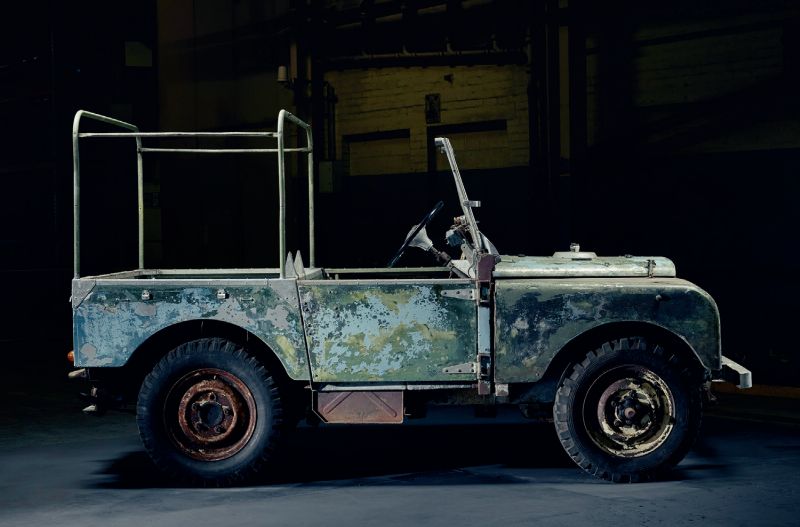
“It’s number 6 for the engine, number 7 for the transmission and radiator. When I put all of that together, it dawned on me.”
— Reg Mason, a Land Rover classic fan, rediscovered the car
▼
When Mason finally came to Birmingham to inspect a vehicle carefully, he saw two vehicles, one still at least retained the shape of a complete car, and the other had been changed beyond recognition, looking like a “rotten big car.” Box”.
They were sunk so deep in the soil that the axles were partially buried in the ground for up to 20 years. After negotiating a price with a contractor, it took Mason and his friend Dave Amphiett nearly four months to fully dig out both cars and return them to his garage.

However, at this time, Mason did not realize the favor of the goddess of luck. It wasn’t until one day, when he showed a photo to a friend who was crazy about Land Rover Series 1 models, that he realized that the car he bought this time might be a little special. Mason said: “He recognized it as a possible prototype from the gear lever on the ‘rotting car’. Production cars usually have separate integrated brackets for the gear lever, and my car has three. Brackets welded together.”
After further inspection, Reg found the number “7” on the chassis of the car, so he finally determined that it was an early prototype.
“Its engine number is 6, the gearbox and radiator are both number 7. After connecting all these together, it suddenly dawned on me that I have a ‘rare beast’.”
glorious history
A team led by Land Rover expert and historian Mike Bishop confirmed the car’s identity after scrutinizing the L07.
Therefore, Land Rover bought it from Mason and handed it over to this expert team for research and investigation. Months later, they finally certified it as the “SNX 910” – an engine test car built in early 1948, one of the first 10 pre-production models.
At the time, three people tested it step by step. They are: Land Rover’s legendary engineer Arthur Goddard (Arthur Goddard), test driver Johnny Cullen (Johnny Cullen) and the original designer of Land Rover – Moore, who was then head of engineering at Rover Motor Company. Maurice Wilks.

More importantly, however, this car was one of the first cars at the 1948 Amsterdam Motor Show. Arthur Goddard, 96, said: “It is no exaggeration to say that the original Land Rover was widely recognized at that year’s auto show. It is even more worth remembering that this car was designed and built in just a few years.” months. Then, just the three of us did most of the testing of it near Maurice Wilkes’ holiday home on Anglesey. So when the car show opened, we only had time to finish it 10 prototypes. I arrived in Amsterdam with prototype 3 myself. This is my first trip abroad.” He smiled.
“In the end, the success of the original Land Rover changed Rover’s fortunes.” And indeed, 24,000 of the original Land Rover were produced in the first two years.
At the end of 1948, after the Amsterdam Motor Show, prototype No. 7 was converted from left-hand drive to right-hand drive.
It remained at the Solihull factory until Land Rover sold it in 1955.
Surprisingly, the original car registration certificate of this car was also preserved intact.
As can be seen from this buff paper, the number 7 car changed hands several times in the English Midlands before meeting its final guardian.
Alexander Maddison was its last owner.
His home was in the village of Alderminster, near Stratford-upon Avon.
Mr. Madison runs a dairy company and is also in the business of buying and selling vehicles. Car No. 7 was registered in his name from 1967 to 1969, and no one knows what happened to it after that.
Until 48 years later, a customer walked into Reg Mason’s auto repair shop…

to be continued
Text: LUKE PONSFORD
PHOTO: NICK BALLÓN
Edit: TING



